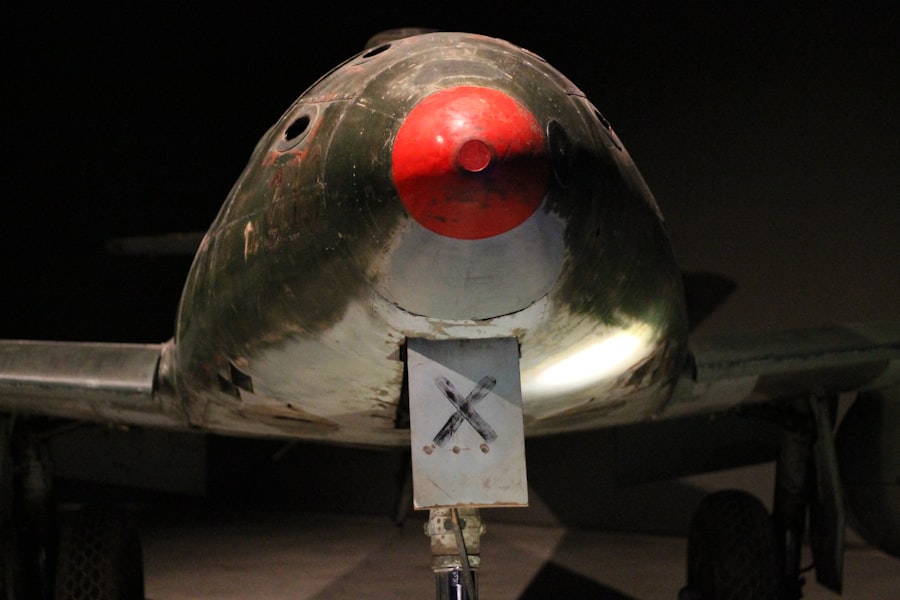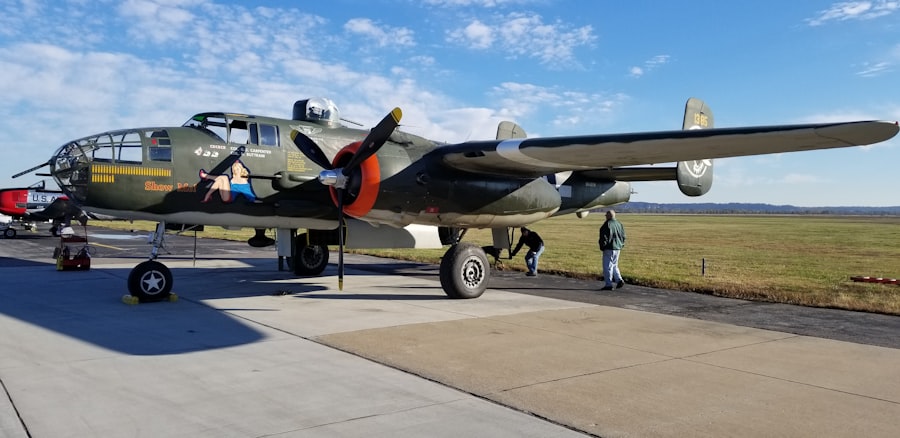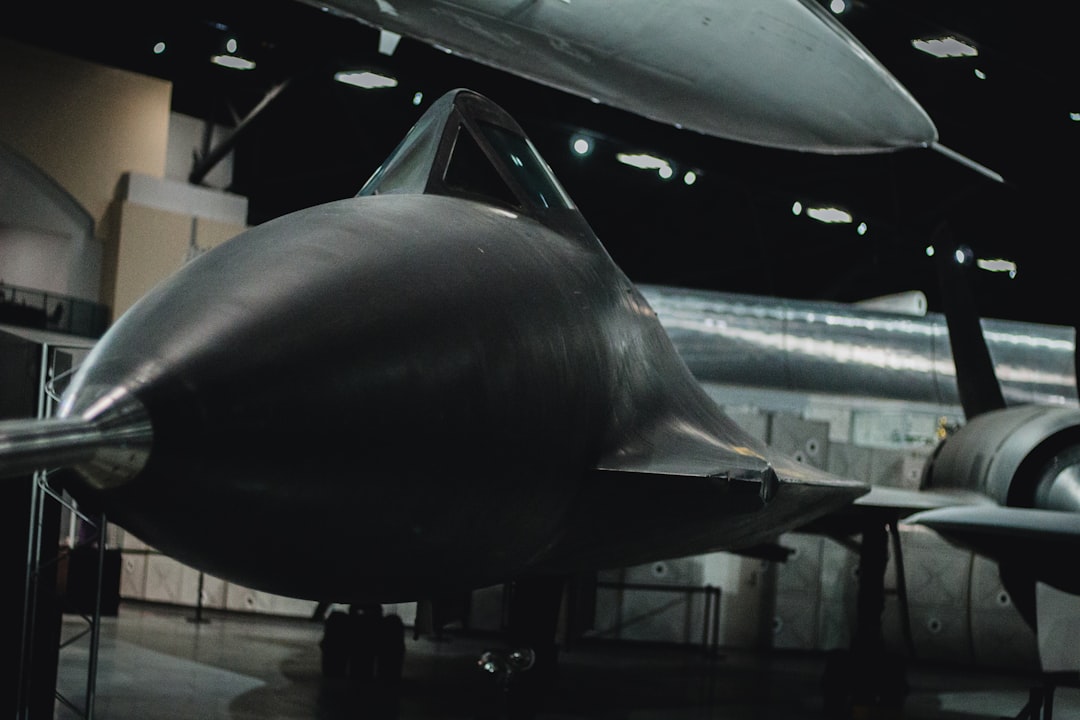The NB-36H was a unique aircraft that emerged during the height of the Cold War, representing a bold experiment in military aviation and nuclear technology. Developed by Convair, this nuclear-powered bomber was designed to explore the feasibility of using nuclear reactors in aircraft, a concept that had both ambitious aspirations and significant implications for warfare. The NB-36H was not merely a prototype; it was a symbol of the era’s technological optimism and the intense competition between superpowers.
As nations raced to develop advanced military capabilities, the NB-36H stood at the intersection of aviation innovation and nuclear strategy. The aircraft’s development was driven by the need for long-range bombers capable of delivering nuclear payloads without the limitations imposed by conventional fuel. The NB-36H was intended to extend the operational range of bombers, allowing them to remain airborne for extended periods while carrying out strategic missions.
This ambitious project not only aimed to enhance military effectiveness but also sought to push the boundaries of engineering and scientific understanding. The NB-36H’s story is one of ingenuity, risk, and the complex interplay between technology and military strategy during a pivotal moment in history.
Key Takeaways
- The NB-36H was a nuclear-powered bomber developed during the Cold War era.
- The purpose of the nuclear bomber was to provide a long-range strategic strike capability.
- The NB-36H had a unique design and specifications, including a shielded nuclear reactor onboard.
- The nuclear reactor’s role in the aircraft was to provide propulsion and power for the aircraft systems.
- The NB-36H faced challenges and controversies due to safety concerns and public opposition to nuclear-powered aircraft.
Development and purpose of the nuclear bomber
The development of the NB-36H began in the early 1950s, a time when the United States was deeply entrenched in the Cold War and seeking ways to maintain its strategic advantage over the Soviet Union. The U.S. Air Force recognized that conventional bombers had limitations in terms of range and endurance, particularly when tasked with delivering nuclear weapons.
In response to these challenges, the Air Force initiated the Nuclear Energy for the Propulsion of Aircraft (NEPA) program, which aimed to explore the potential of nuclear propulsion systems. The primary purpose of the NB-36H was to serve as a testbed for nuclear propulsion technology. Unlike traditional bombers that relied on jet fuel, the NB-36H was designed to be powered by a nuclear reactor, which promised to provide virtually unlimited range and endurance.
This capability would allow bombers to remain airborne for extended periods, conducting reconnaissance or striking targets deep within enemy territory without the need for frequent refueling. The ambitious vision behind the NB-36H reflected a broader military strategy that sought to leverage cutting-edge technology to deter adversaries and ensure national security.
Design and specifications of the NB-36H

The design of the NB-36H was based on Convair’s B-36 Peacemaker, a heavy bomber that had already established itself as a formidable aircraft in the U.S. Air Force’s arsenal. The NB-36H retained many of the B-36’s features but incorporated significant modifications to accommodate its unique propulsion system.
The most notable alteration was the addition of a nuclear reactor housed within a heavily shielded compartment in the aircraft’s fuselage. This reactor was designed to provide power for the aircraft’s engines while ensuring the safety of the crew. In terms of specifications, the NB-36H was an imposing aircraft.
It had a wingspan of approximately 230 feet and a maximum takeoff weight of around 400,000 pounds. The aircraft was equipped with six Pratt & Whitney R-4360 Wasp Major engines, which provided additional thrust during takeoff and landing. The reactor itself was a small, experimental model known as the “Nuclear Reactor Test Unit,” which produced enough power to sustain flight operations while minimizing radiation exposure to the crew.
The combination of these design elements made the NB-36H a remarkable engineering achievement, showcasing both the potential and challenges of integrating nuclear technology into aviation.
Nuclear reactor and its role in the aircraft
| Aspect | Information |
|---|---|
| Type of Nuclear Reactor | Typically a compact, high-temperature gas-cooled reactor (HTGR) or a liquid metal-cooled reactor (LMR) is used in aircraft. |
| Power Output | Can generate several megawatts of power, providing energy for propulsion and onboard systems. |
| Advantages | High energy density, long endurance, and reduced reliance on traditional fuel sources. |
| Challenges | Ensuring safety, managing radioactive materials, and addressing public concerns about nuclear power in aircraft. |
| Role in Aircraft | Provides a potential alternative to traditional jet engines, offering greater efficiency and range for long-duration flights. |
At the heart of the NB-36H’s design was its nuclear reactor, which played a crucial role in its operation and mission capabilities. The reactor was intended to demonstrate that an aircraft could be powered by nuclear energy, providing an alternative to conventional fuel sources. This innovation promised not only extended flight times but also reduced logistical challenges associated with refueling bombers during long missions.
The reactor’s operation was carefully monitored to ensure safety and efficiency. It generated heat through nuclear fission, which was then converted into thrust by powering turbines connected to the aircraft’s engines. This process allowed the NB-36H to fly at high altitudes for extended periods while carrying out its strategic objectives.
However, integrating a nuclear reactor into an aircraft also posed significant challenges, including radiation shielding and safety protocols for crew members. Engineers had to develop sophisticated systems to protect personnel from radiation exposure while ensuring that the reactor operated reliably throughout various flight conditions.
Challenges and controversies surrounding the NB-36H
Despite its innovative design and ambitious goals, the NB-36H faced numerous challenges and controversies throughout its development and testing phases. One of the primary concerns was safety; operating a nuclear reactor in an aircraft raised significant questions about potential accidents and radiation exposure. Critics argued that the risks associated with flying a nuclear-powered bomber outweighed its potential benefits, especially given the catastrophic consequences that could arise from a crash or reactor failure.
Additionally, there were technical challenges related to maintaining stable reactor operations during flight.
The complexity of integrating such advanced technology into an aircraft also led to delays and increased costs, prompting some policymakers to question whether resources would be better allocated to other military projects.
These controversies highlighted the tension between technological ambition and practical considerations in military aviation.
Testing and evaluation of the nuclear bomber

The testing phase of the NB-36H was critical in determining its viability as a nuclear-powered bomber. Initial flights began in 1955, with extensive evaluations conducted to assess both its performance and safety features. During these tests, engineers monitored various parameters, including engine performance, reactor stability, and crew safety protocols.
The aircraft underwent numerous modifications based on feedback from these evaluations, reflecting an iterative approach to refining its design. One notable aspect of testing involved simulating various flight scenarios to assess how well the reactor would perform under different conditions. This included high-altitude flights as well as maneuvers that would typically stress conventional bombers.
The results from these tests provided valuable insights into both the capabilities and limitations of nuclear propulsion in aviation. While some aspects of performance were promising, others raised concerns about reliability and safety, leading to ongoing debates about the future of nuclear-powered military aircraft.
Crew and operation of the NB-36H
Operating the NB-36H required a specialized crew trained not only in conventional aviation but also in handling nuclear technology. The crew typically consisted of pilots, co-pilots, navigators, and engineers who were responsible for monitoring both flight operations and reactor performance. Given the unique challenges posed by flying a nuclear-powered aircraft, crew members underwent rigorous training programs designed to prepare them for potential emergencies related to reactor operation.
The operational procedures for the NB-36H were complex due to its dual nature as both an aircraft and a nuclear facility. Crew members had to be well-versed in safety protocols related to radiation exposure and emergency response measures in case of reactor malfunctions or accidents. This added layer of complexity made operating the NB-36H distinct from traditional bombers, requiring a high level of coordination among crew members during missions.
Role of the NB-36H in Cold War strategy
The NB-36H played a significant role in shaping Cold War military strategy, particularly regarding nuclear deterrence. As tensions between superpowers escalated, having a reliable means of delivering nuclear weapons became paramount for national security. The development of nuclear-powered bombers like the NB-36H represented an effort to enhance strategic capabilities by extending operational ranges and reducing vulnerability during missions.
While it never entered active service as a frontline bomber, the NB-36H served as a critical stepping stone in understanding how nuclear technology could be integrated into military aviation. Its existence underscored America’s commitment to maintaining technological superiority over adversaries during a time when air power was increasingly viewed as essential for deterrence strategies.
Legacy and impact of the NB-36H
The legacy of the NB-36H extends beyond its operational history; it represents a pivotal moment in aviation and military technology development. Although it never saw combat or full-scale deployment, its contributions to understanding nuclear propulsion laid groundwork for future advancements in aerospace engineering. The insights gained from testing and evaluating this aircraft informed subsequent designs that would incorporate elements of nuclear technology more effectively.
Moreover, the NB-36H serves as a reminder of an era marked by rapid technological change and intense geopolitical rivalry. Its story reflects both human ingenuity and cautionary tales about pushing boundaries without fully understanding potential consequences. As nations continue to grapple with issues related to nuclear technology today, examining projects like the NB-36H provides valuable lessons about balancing innovation with responsibility.
Comparison with other nuclear bombers of the era
When comparing the NB-36H with other nuclear bombers developed during its time, it becomes evident that each aircraft represented different approaches to integrating nuclear capabilities into military aviation. For instance, while the B-52 Stratofortress became one of America’s most iconic bombers with its ability to carry both conventional and nuclear payloads effectively, it relied on traditional jet fuel rather than nuclear propulsion. In contrast, projects like the North American XB-70 Valkyrie showcased advanced aerodynamics and speed but also did not utilize nuclear power directly for propulsion purposes.
The NB-36H’s unique position as an experimental platform highlights how various nations explored different avenues toward achieving strategic air power during an era defined by technological experimentation and innovation.
The NB-36H’s place in aviation and military history
In conclusion, the NB-36H occupies a distinctive place within both aviation history and military strategy during one of humanity’s most tumultuous periods—the Cold War. Its ambitious design aimed at harnessing nuclear energy for flight exemplified human creativity while simultaneously raising profound ethical questions about warfare’s future implications. Although it never achieved operational status as intended, its legacy endures through lessons learned about integrating advanced technologies into military applications.
As nations continue navigating complex geopolitical landscapes today—often influenced by historical precedents like those set forth by projects such as the NB-36H—it remains essential to reflect on how innovation can shape our world positively or negatively depending on choices made along this journey toward progress.
The NB-36H nuclear bomber was a fascinating piece of Cold War history, representing a unique era of military innovation and ambition. For those interested in exploring more about the technological advancements and historical context of this period, a related article can be found on the Hey Did You Know This website. This article delves into various intriguing aspects of military technology and history, providing a broader understanding of the era’s innovations. You can read more about it by visiting this page.
WATCH THIS! The Flying Nuclear Disaster: The Untold Story of the Cold War’s Most Dangerous Aircraft
FAQs
What was the NB-36H nuclear bomber?
The NB-36H was a modified B-36 bomber that was equipped to carry and test a nuclear reactor in flight.
How did the nuclear reactor work on the NB-36H?
The nuclear reactor on the NB-36H used a combination of uranium and graphite to produce heat, which was then used to power the aircraft’s engines.
What was the purpose of the NB-36H nuclear bomber?
The purpose of the NB-36H was to test the feasibility of using nuclear power to propel aircraft, as well as to study the effects of nuclear radiation on the aircraft and its crew.
Did the NB-36H nuclear bomber ever see combat?
No, the NB-36H was never used in combat. It was primarily a test aircraft used for research and development purposes.
What were the results of the NB-36H nuclear bomber tests?
The tests conducted with the NB-36H provided valuable data on the use of nuclear power for aircraft propulsion, but ultimately the concept was not pursued further due to safety and practicality concerns.
